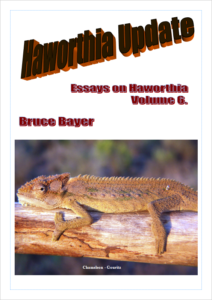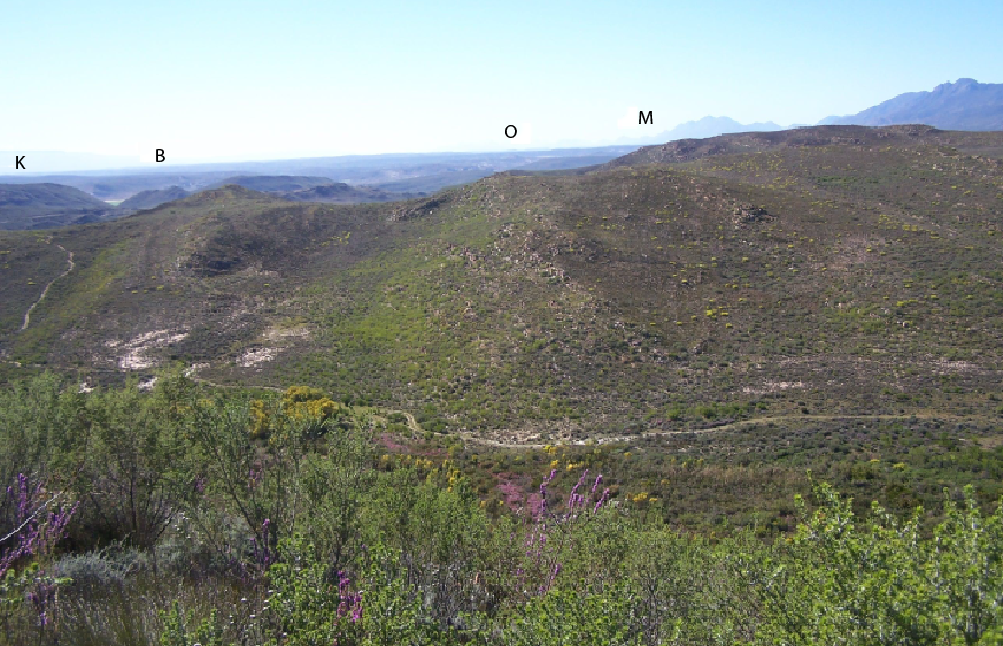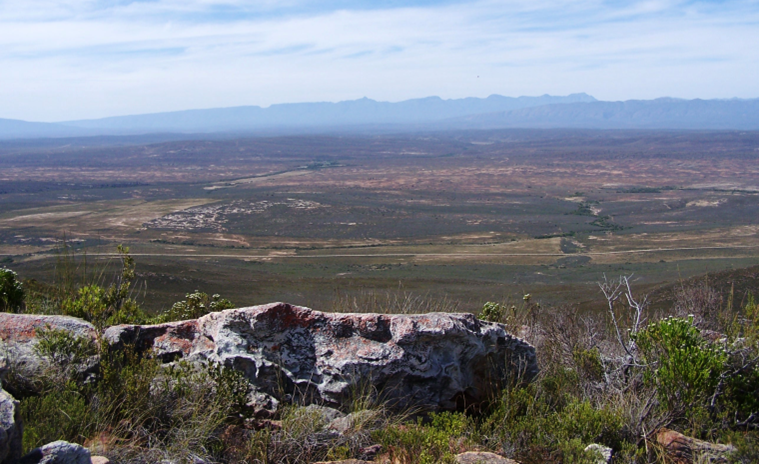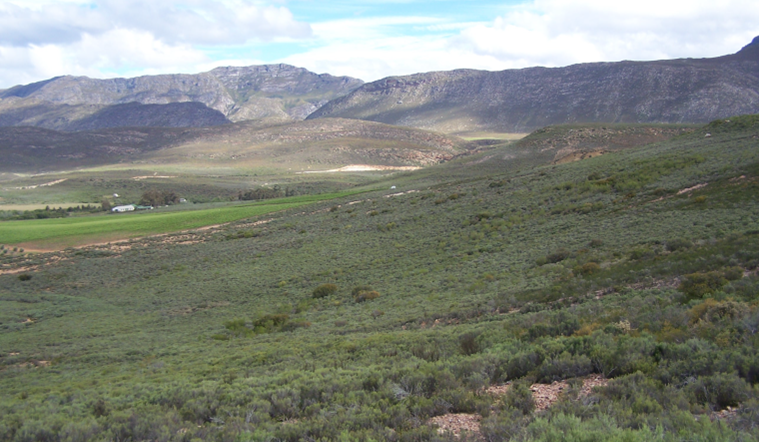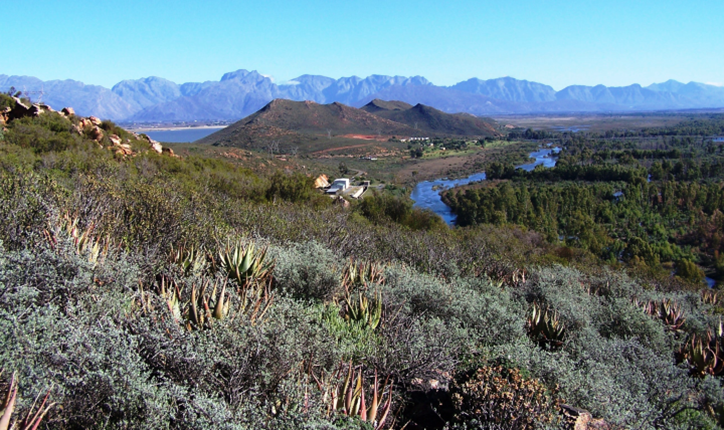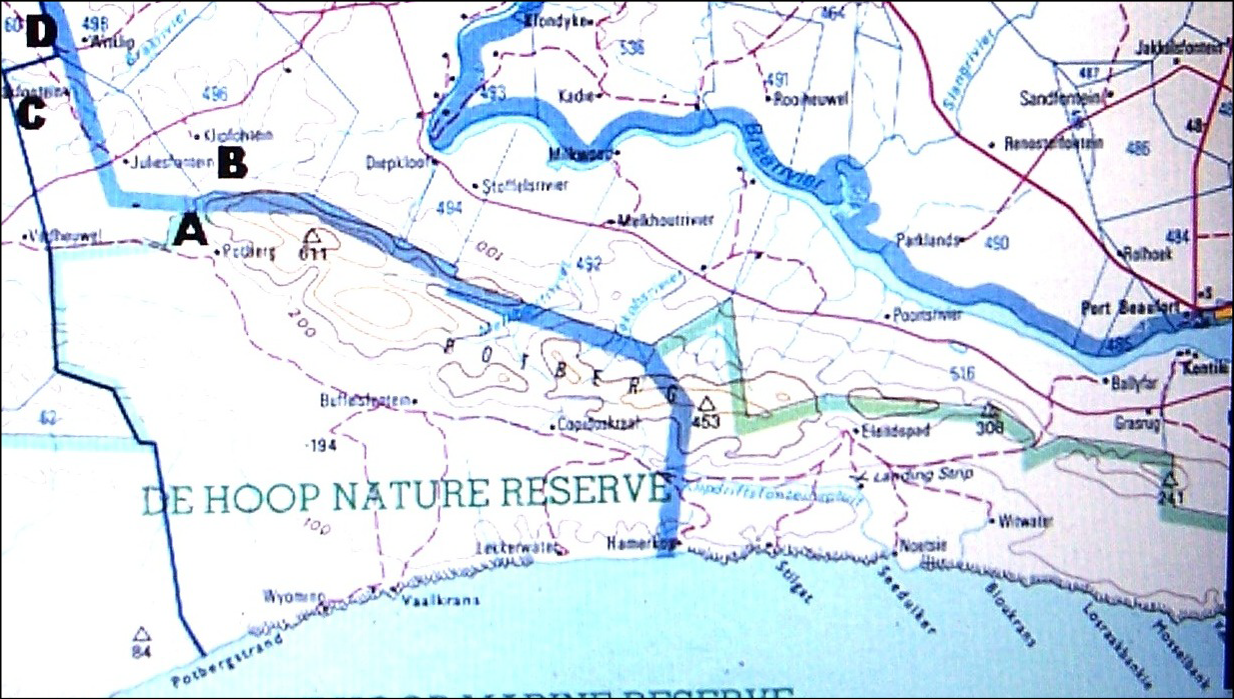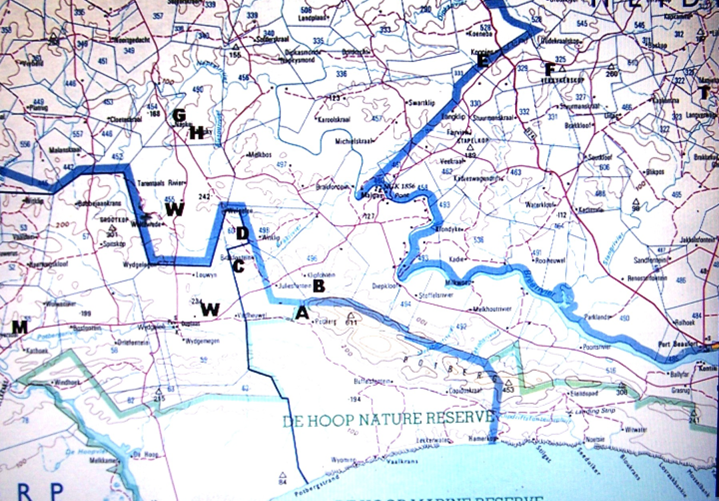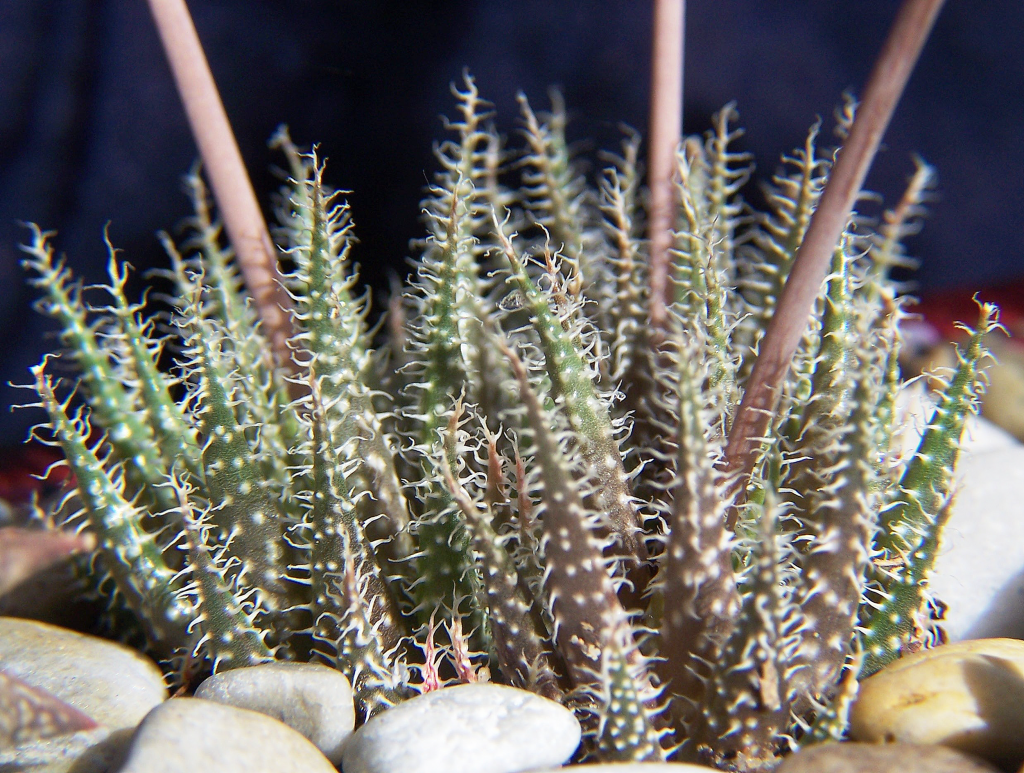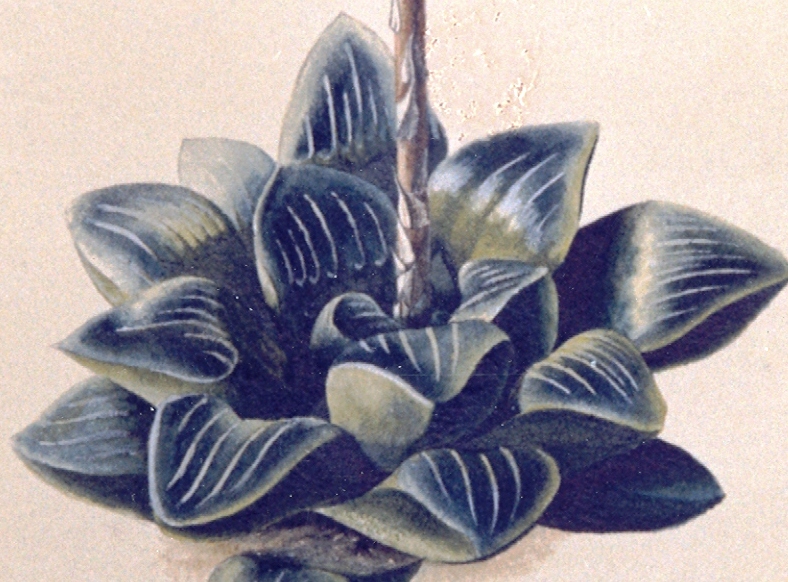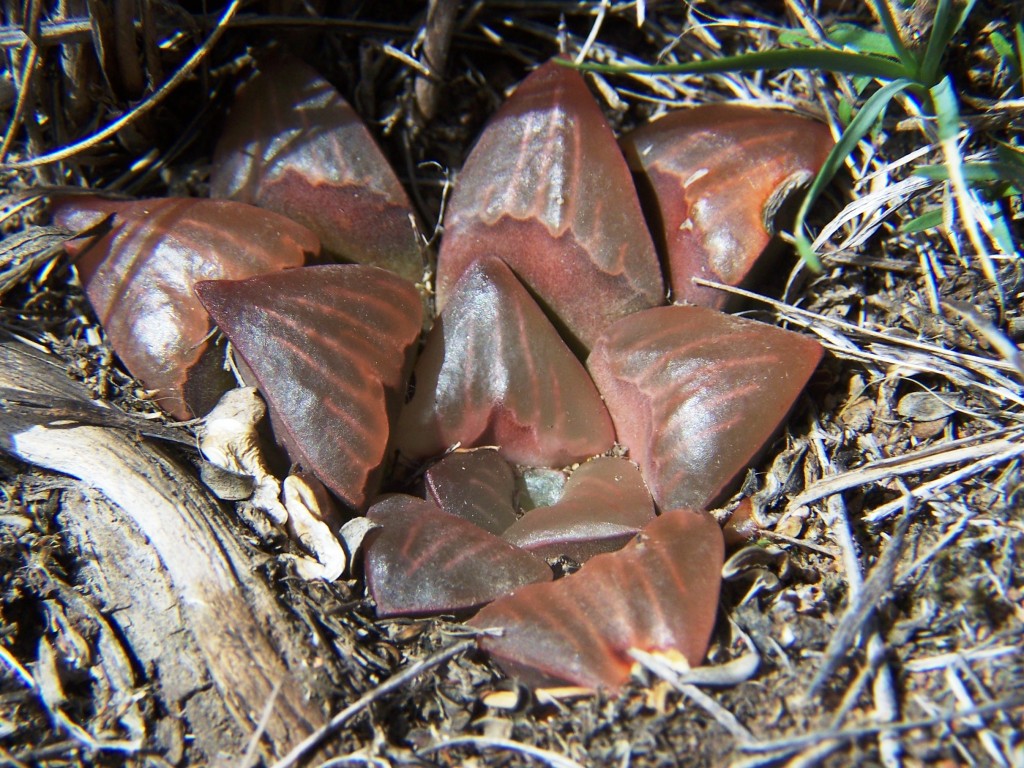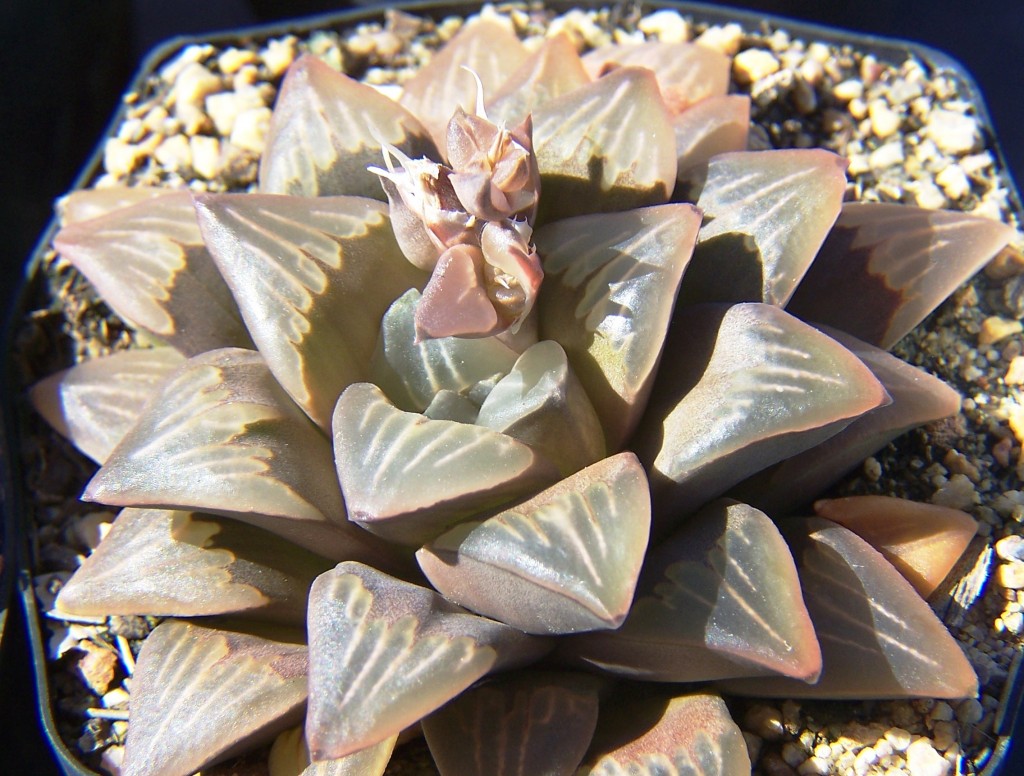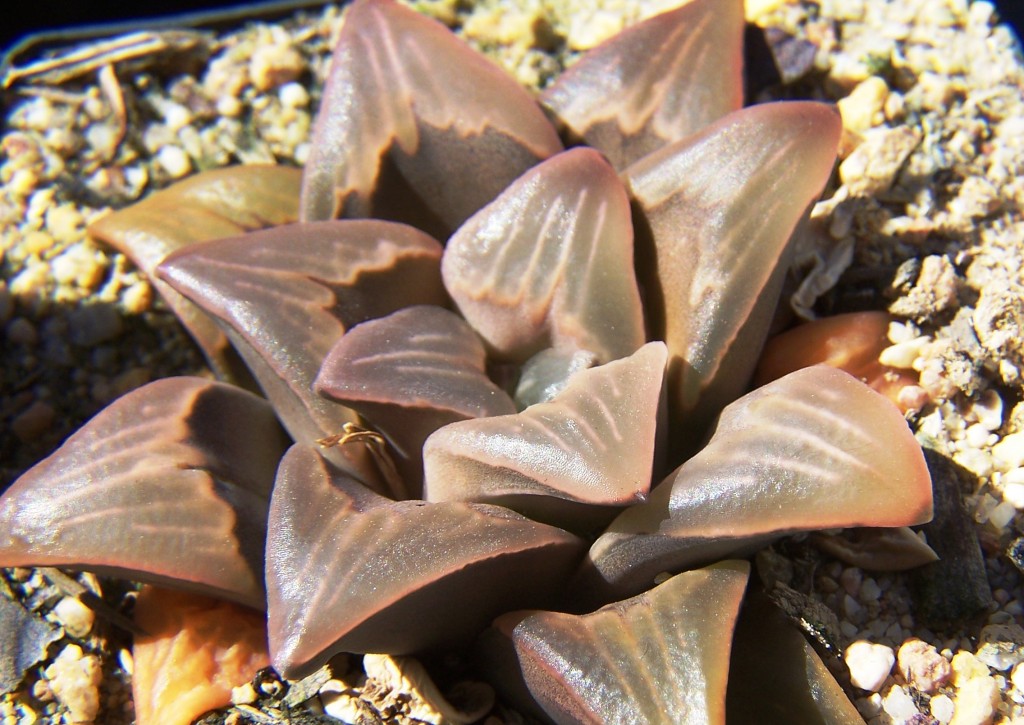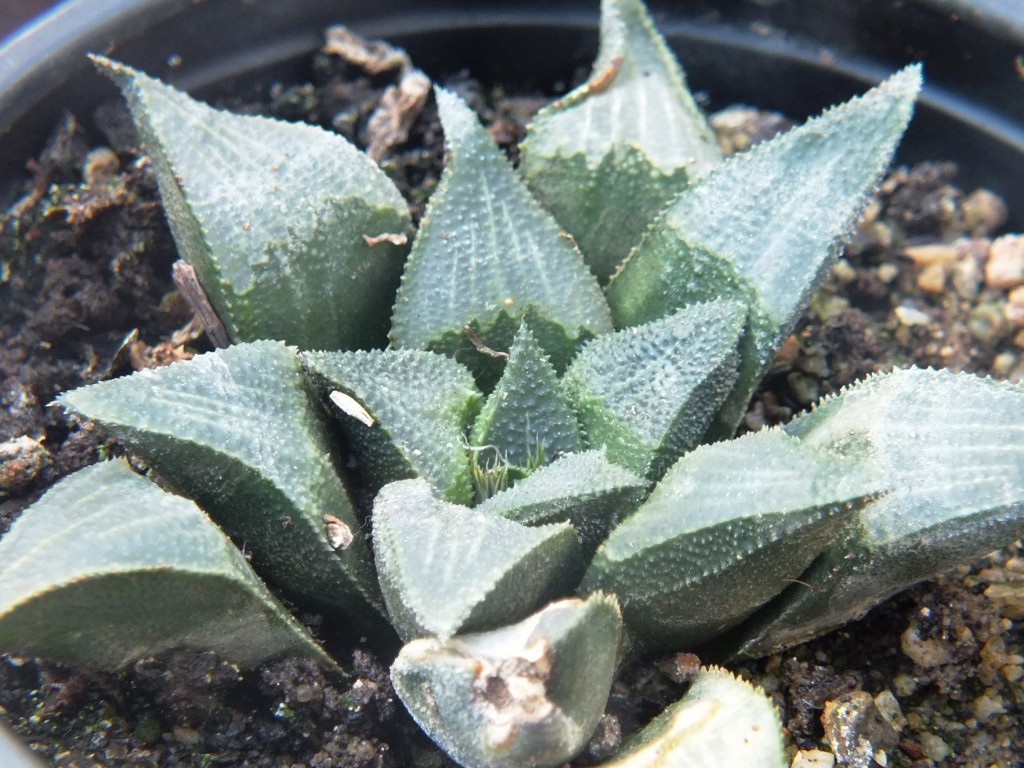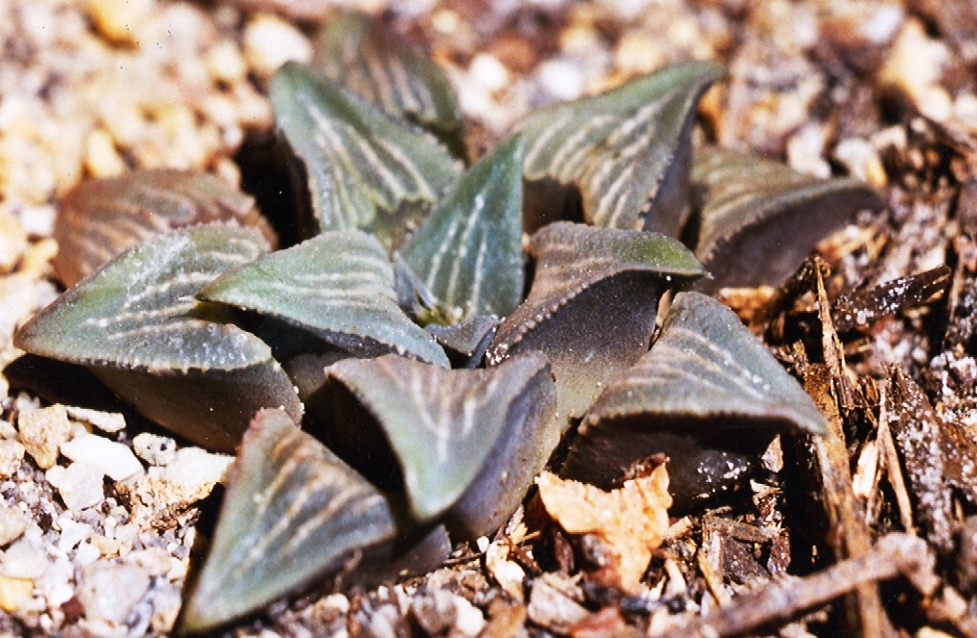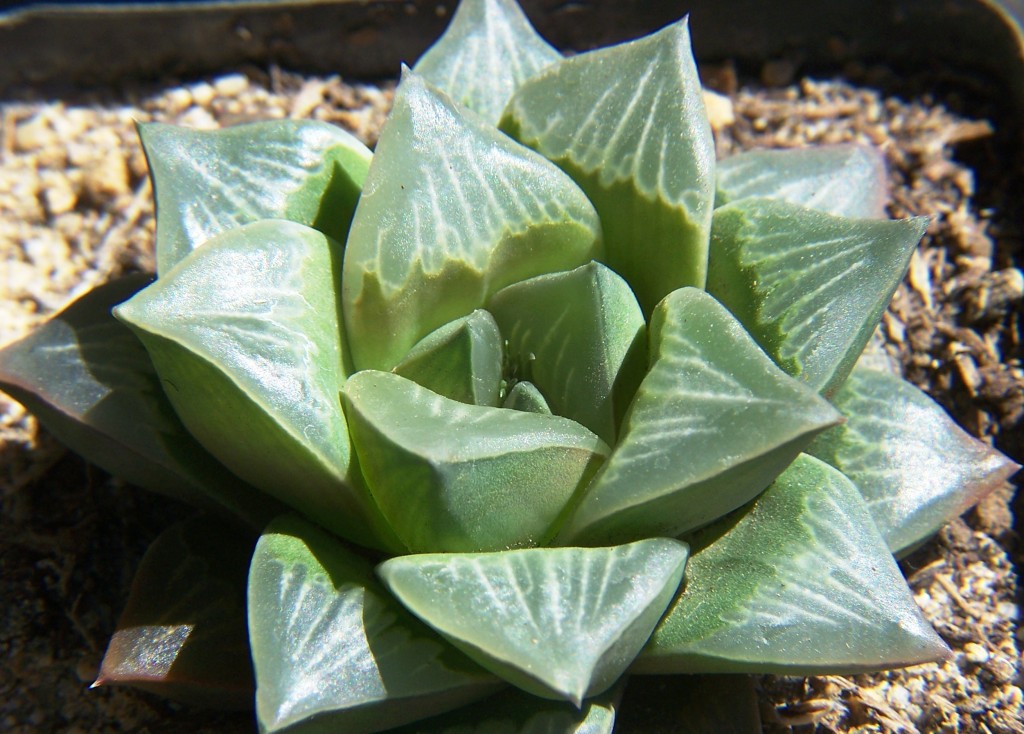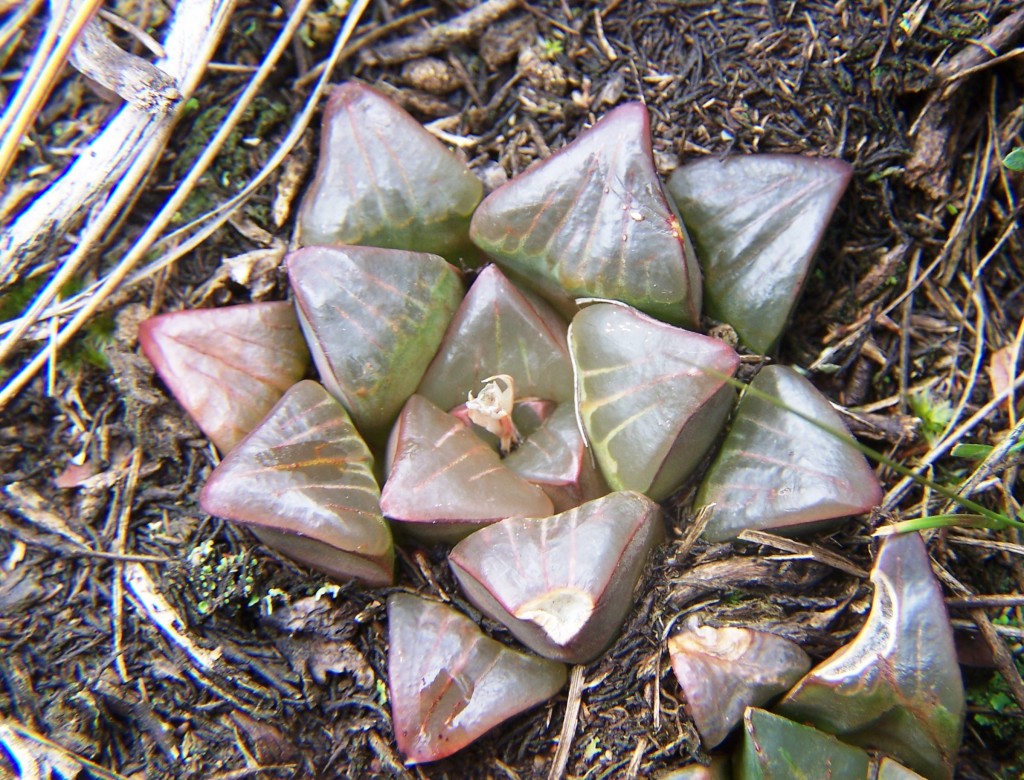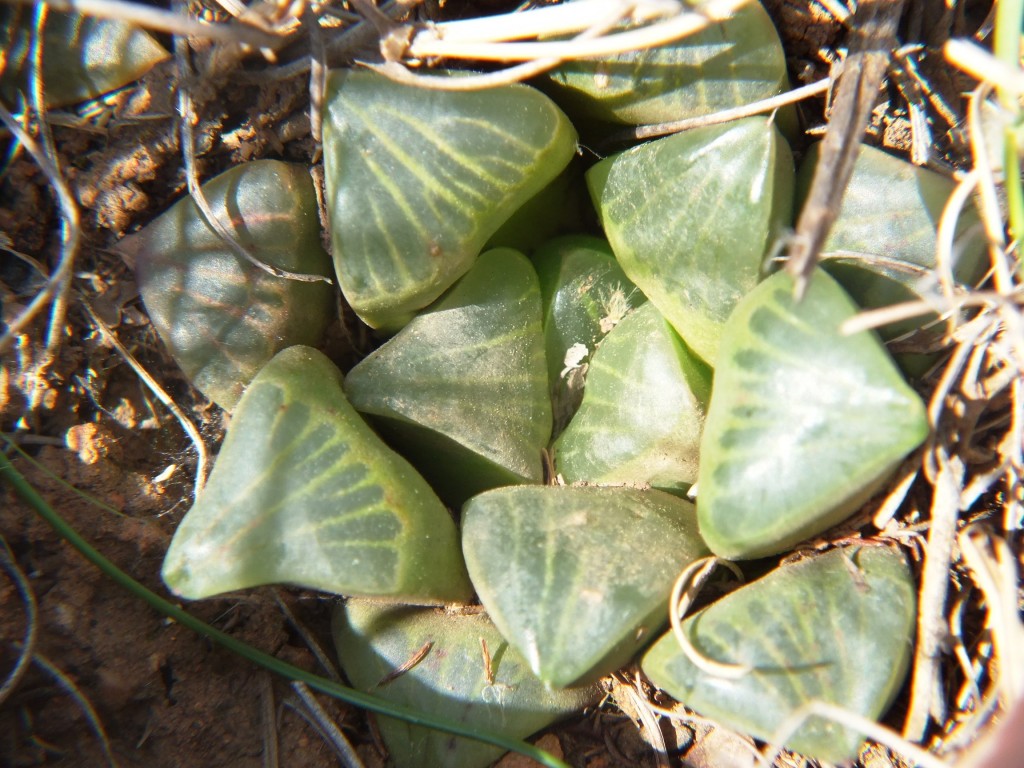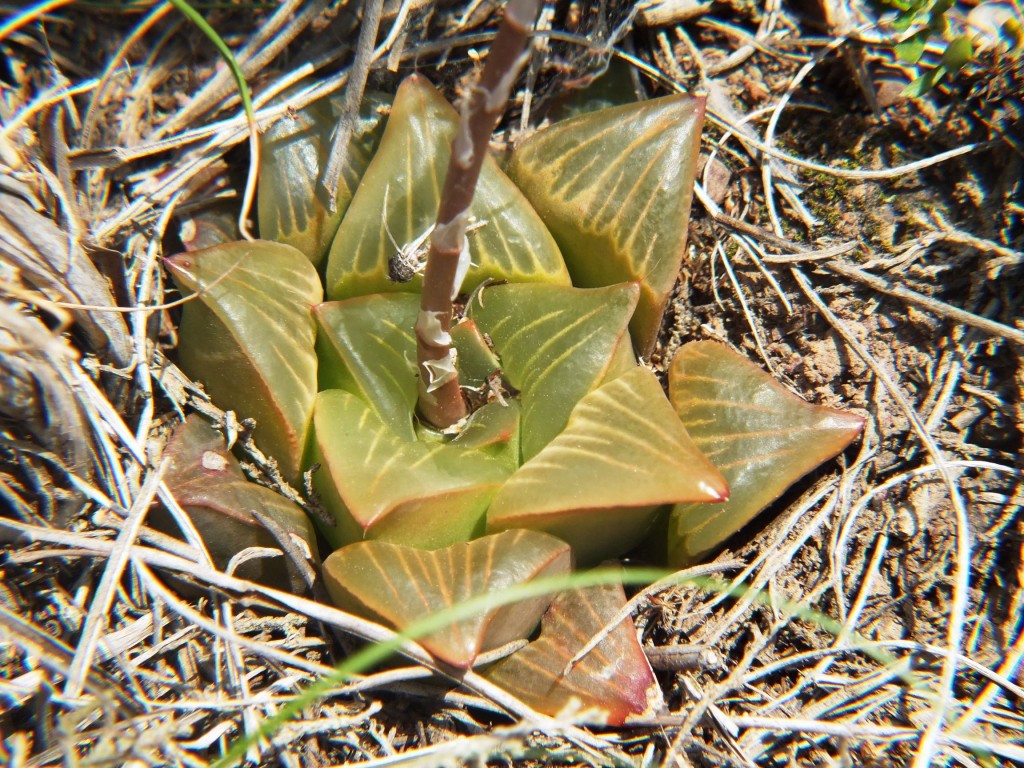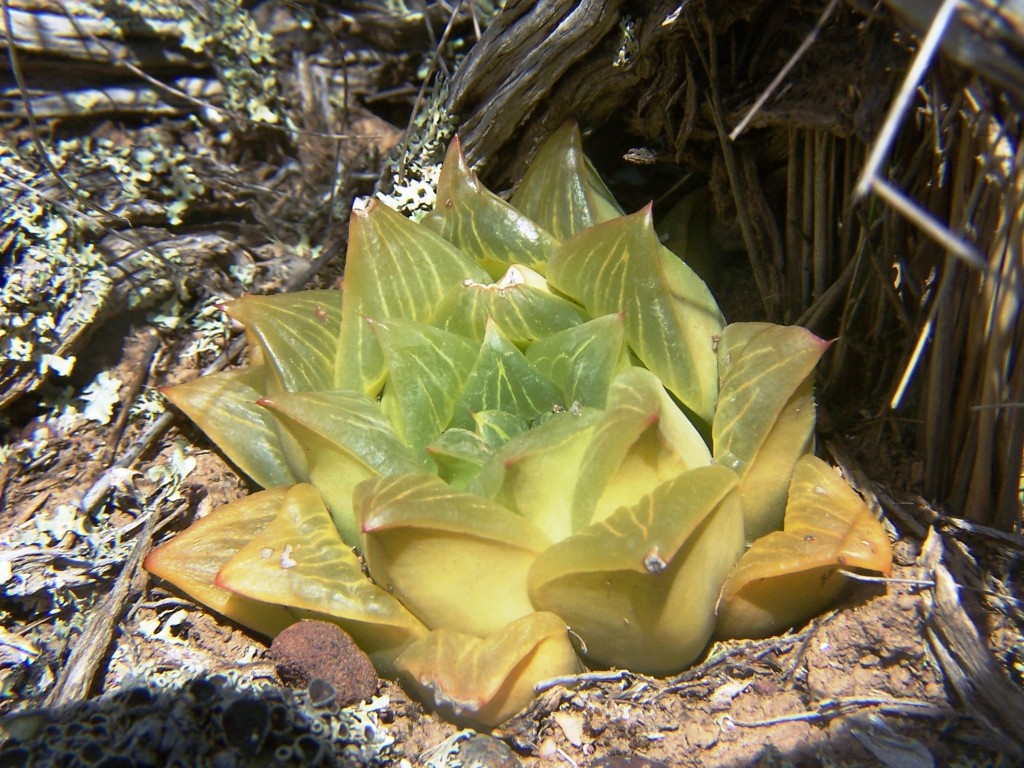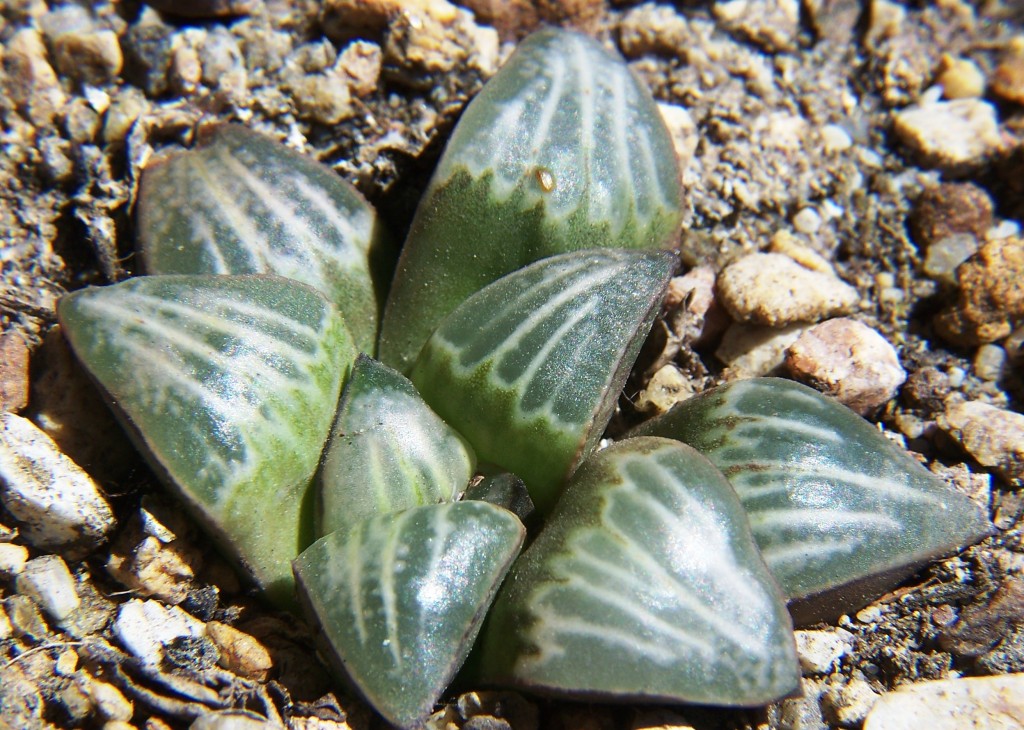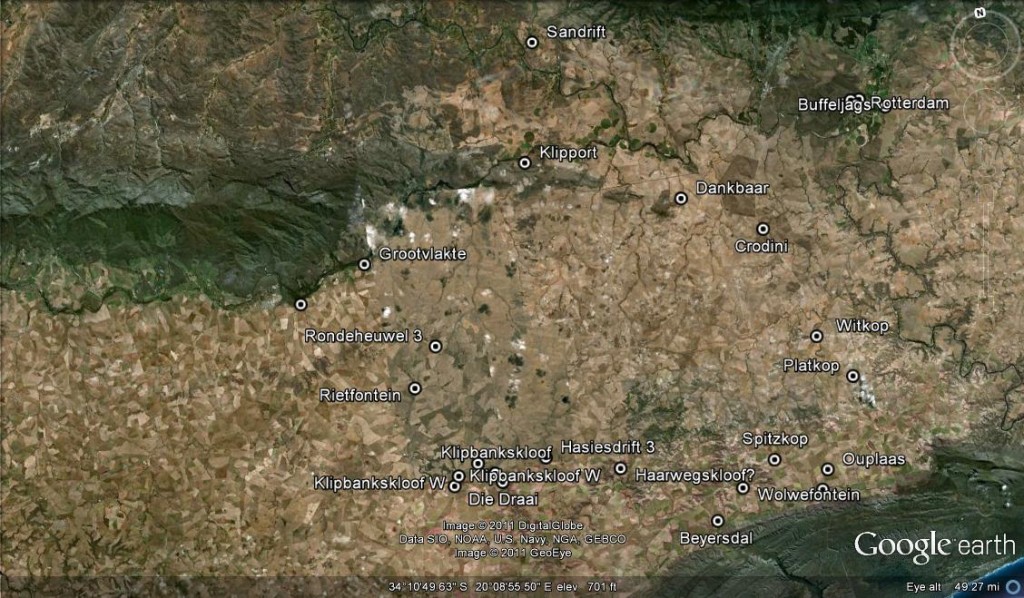Explanatory note: In a rationalized list of names I wrote and had published in Haworthia Update Vol 7. I made two decisions. On of these was in respect of H. marxii and the other in respect of H. truteriorum. In the case of H. marxi I included it under H. emelyae. In the case of H. truteriorum, I placed this under H. bayeri. In neither case did I have good evidence for doing so, much other than my conviction that a classification is intended to reflect origins and relationships. In formalizing names one perforce is pressured into making decisions that you are not informed enough to make. My main defense is that the authors of the two species were not adequately informed either. I think their account of H. mutica (their H. groenewaldii) at Buffeljags demonstrates this. H. marxii presents particular problems that I simply do not have any substantial data that I can process. In the case of H. truteriorum I did have some to which I can now add. This suggests as Breuer and Marx indirectly indicate, that H. truteriorum relates to my concept of H. mirabilis. I concede that I may be quite wrong in attributing it to H. bayeri. I find it very difficult to see the decision to describe it as a distinct species as a logical scientific action. This article does not extol any imagined virtues or skills of mine. It is only intended to further project my opinion that we urgently need to work towards a classification that does satisfy scientific principle and not novelty or commercial ends. It is also a counter to some very negative opinion aimed in my direction.
At a level above classification lies respect for people and their feelings. Therefore this writing should not be seen as anything but a commentary on the classification process and not how this can also denigrate people as much as honor them. H. marxii is described by Sean Geldenhuys in ALOE 44.1:5, 2007 from apparently 2 populations in a confined area in the north and east of the Little Karoo. Placing it with H. emelyae simply reflects doubts that need to be expressed about how this oddity has come about, and respect lost for reasons not necessary to explain. H. truteriorum is described by Ingo Breuer and Gerhard Marx in ALOE 48.3:54, 2012 and refers to a single population of plants southeast of Oudtshoorn. That this latter population is singular and extremely interesting goes without question except for how it is explained. Despite much correspondence with both authors and after reading their published works, I am not aware that either has a concept of what a species is any different than what may have been held by either K. Von Poellnitz or G.G. Smith. Ingo Breuer particularly has published what he refers to as a species concept of Haworthia. This is nothing more than a long list of Latin binomials and we have to assume that this is then also a list of real species whatever they might be. Gerhard Marx maintains that my attempt at a species definition is so broad as to be meaningless. He has not supplied an alternative definition and I am left with the impression that he makes the same assumptions that “character” differences equate species as does the ordinary uninformed mortal.
H. truteriorum is described in a popular journal (Aloe) that has been approached by at least one botanist not to publish new species as there is no official review process. However, the response was that the journal does have its own in-house authorities that cover the possibilities of scientific lapse. I note that the article is specifically foot-noted to indicate an editorial review and I perforce do not see this as a check on the scientific content. There are some lapses that I will deal with but recognizing that these might not be the same ones that a properly qualified botanist (a minimum of a recognized 4-year degree course), nor those that an experienced and knowledgeable botanical taxonomist may have corrected. More important though is the population itself and where it fits into the overall Haworthia picture.
The most substantial gain that we can make is to arrive at a species definition. It is evident to me that species are complex systems in which there are variations that have arisen from to earth differences and must continue to exist to facilitate response. If there is evolution and thus adaptation and selection, then there has to be something to work with. The phylogenetic idiom was “specialization is precursor to extinction”. Geological and habitat diversity result in plant diversity. This diversity is necessary for survival as the habitat changes. Therefore a species will have a geographic distribution across which individuals and populations will vary and be different from one another. Geology and geomorphology will be strong factors influencing plants like Haworthia that are associated with skeletal soils and rocky habitats. This means that we have to look for associations in respect of distributions and the driving forces that affect even vegetation. Thus in the case of H. marxii (known from 2 populations in a small area south of Laingsburg) the vegetative appearance of the plants cannot be seen in any other species geographically closer than H. emelyae, which is quite a long distance away southwards. The presence of H. pumila in the same area as H. marxii suggests that the Haworthia presence there could extend from the Worcester/Robertson Karoo. Hence H. mirabilis, also present in the Montagu area, cannot be ruled out in seeking a relation to H. marxii. There is much more to this issue of H. mirabilis in respect of its variability and its distribution into the Little Karoo that impacts directly on this suggestion. It also impacts on the real identity of H. truteriorum.
Where I see a real problem with H. marxii is in floral morphology. I gather that the flower very much resembles that of H. marumiana dimorpha. In the same way that the flower of H. pulchella globifera is identical to that of H. cymbiformis incurvula at Plutos Vale, there is a massive problem in drawing conclusions from flowers as a character for the level at which all role players are trying to identify species. But so-much for H. marxii and I do not seriously question it.
The case of H. truteriorum is more manageable. I have been speculating for a long time that H. mirabilis and H. emelaye may in fact be the same species. This may be the proper level at which we should be recognizing species as systems. I extend the argument even to say that it is not inconceivable that H retusa and H. mirabilis are one species. This means that I have to bury my long-held objection to the view that “Haworthia is a genus in a state of active evolution”. My objection being that this is an obvious aspect and that in any case all species are faced with the inevitable need for change and adaptation. But this does not weaken my view that species are chaotic fractal systems that vary around a point of attraction according to the stability of their genetic bases and mutating rate. How strong I am on the technicalities of DNA and evolutionary theory may be problematic, but there is no evidence that other authors even contemplate the issues.
Gerhard Marx is a remarkable observer and I have huge respect for his many skills. Breuer is a really competent compiler too. I do not question what they say about the characters of the plants and their observations. What I question is their knowledge and insight into broader botany and the distribution and variation in Haworthia however much more they know than the above average collector.
My prime objection is that the description involves a single localized population. This in itself creates huge doubts in my mind because on this basis, Breuer’s several hundred species is conservative. I will only dwell on three other points. The one is their very trite “Never before have retusoid type Haworthias been found growing in shale in the Little Karoo”. The second point is the habitat description in relation to geology. The third is the flower and flowering time. The fourth is about the illustrations and the art work.
Haworthia mirabilis was recorded in shale at Barrydale by Smith prior to 1947. It was recorded at two places in shale or shale derived soils prior to 1999 and I can add that I have seen it at two new locations in shale in the Montagu area since. The second point is the description where it is referred to H. bayeri and H. emelyae occurring in quartzite and quartzite conglomerates. As in the description of H. groenewaldii, this is simply a very crude and inaccurate account of a very important issue. I am no geologist but I do know what quartz is and that it occurs in both shale and sandstone formations. Furthermore, I do know that the Oudtshoorn area has an incredible geology with ancient and recent geological formations adjoining as a consequence of faulting and folding. Quartz is Silicon Oxide and is apparently soluble in water at high temperature and pressure formation so that it can accumulate in fissures and bands in parent rock. In both sandstone and shale the quartz varies in purity, and the crystals in size. South of the Langeberg the shales are covered in an extensive layer of tertiary gravels that are far less extensive north of the mountains. But the main point is that the vast quartz patches of the Little Karoo are actually associated with quartz existent in the Bokkeveld shale. The “species” need to be properly looked at in their relation to that complex geology that exists there. Marx and Breuer mention the differences north and south of the Outeniqua Mountains. But the Outeniqua Mountains are just an eastern extension of the Langeberg from the Gouritz River gorge. The geology north of that area is quite different from that west of the Gouritz. This suggests an ignorance of geography added to that displayed for the geology.
Checking my own knowledge and experience of the habitats of the species involved (viz. bayeri and emelyae – with the name picta an anomalous insertion), it is very clear that the statement “quartzite and quartzite conglomerates” is erroneous. There are four geological formations involved and these are the Table Mountain Sandstones, Bokkeveld Shales, and then Enon and Tertiary deposits. In the Heimersriver where the H. bayeri, H. emelyae and “H. truteriorum” are reported, lacks Enon presences. The report of the plants in unfragmented, unweathered upright shale (Bokkeveld) needs to note that the quartz patches in the area are the result of fragmented and weathered shale.
Marx and Breuer perhaps should also take account of H. outeniquensis not a great deal further south in an area that I believe is still unexplored. There is also the mystery of a plant found by Avril Schein in that close area that remains unexplained.
We know from the H. retusa /H. mirabilis interaction that flowering time is no barrier to hybridization and that flowering time may not be indicative of a completed speciation process. Ignoring the fact that we can only guess, on the basis of the scientific paradigm, that we are interpreting and trying to understand an evolutionary process. Breuer has attempted to jump this issue by the recognition of “aggregates” and the two authors use the fob of “the mirabilis/maraisii/magnifica complex. This complex I presume is explained as a list of names only. This I do think emanates from a mis- understanding of a real knowledge of field botany generally and of Haworthia in particular. I say this with great emphasis and conviction because it is something I am still working towards. I have just completed a very thorough look at a the flowers of a very small fragment of populations driven by the expressed opinions of both these authors in diverse places, that flowers are significant with the import that I have ignored them. The fact is that if the flowers are considered then we have a bigger problem than before – not a solution. The flowering time of H. truteriorum that Breuer and Marx cite is very possibly an indicator of behavior rather than a species differentiator. Why they emphasize it is most probably, as J Manning pointed out, most observers (taxonomists) have a subconscious belief that species are things that do not interbreed and so flowering time is seen as such a great barrier to interbreeding that it MUST be a major species indicator. My observation is that this is not true and that species are inherently highly variable systems with great capacity to respond to environmental drama that may threaten their continued existence. The nature of the problem is very well illustrated in the case of H. retusa and H.mirabilis where I contend that a fully developed view of the genus may require that they be seen as one species. Thus the importance of flower and flowering time is part of the myth of a non-existent species definition and is confounded by the concept Breuer and Marx have of the nature of Haworthia species.
There is a very good description of the flower and its character, but the illustration and the art work is weak. The photograph of the flower is of a single dissected flower to show an internal structure that could be of any species in the subgenus and is hardly helpful. That flower does not look to me like the perhaps longer narrower flower of H. mirabilis (real) which is largely recognizable on the arrangement of the petal tips in the bud-stage. This ‘mirabilis’ character should be apparent in the way the petal tips display and we have only a painting to judge this by. Despite Marx’s craftsmanship I am not sure if his flower picture is a true image. I do have an observation on with his outstanding art. Many years ago, photography was a bit of a handicap when it came to illustration of floral and other plant detail. Historically artists were used to capture detail that could not be described or otherwise illustrated. In the present age this is a bit of a myth and it lives on simply because of the skill that is involved in the production of a good piece of botanical art. Marx’s art is up there with the very best. But good art does not equate to good science? Or does it? Botanical art is perhaps not the same as pure art and the intent of either may be quite different. With pure art one could surely be trying to achieve the same goal as science and there must be some trick to understanding the similarity.
My conclusion is to plead for more rational classification and better attention to those things that matter. The fragmentation of a genus by Latin binomials just because of collector and novelty interests, aggravated by commercial implications however slight, is a disservice to all of us.

